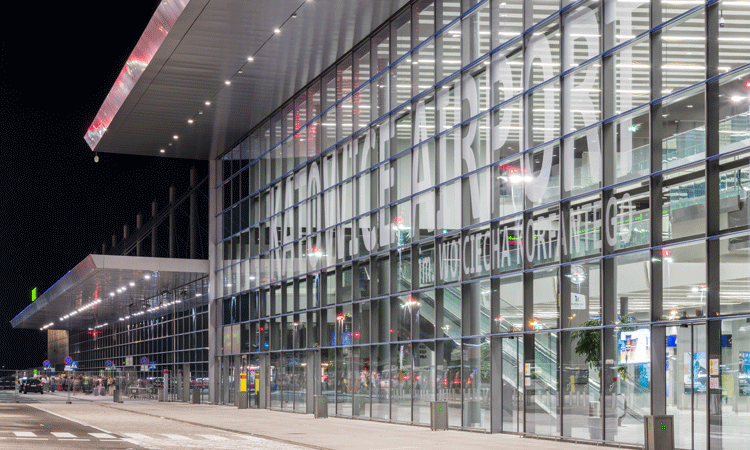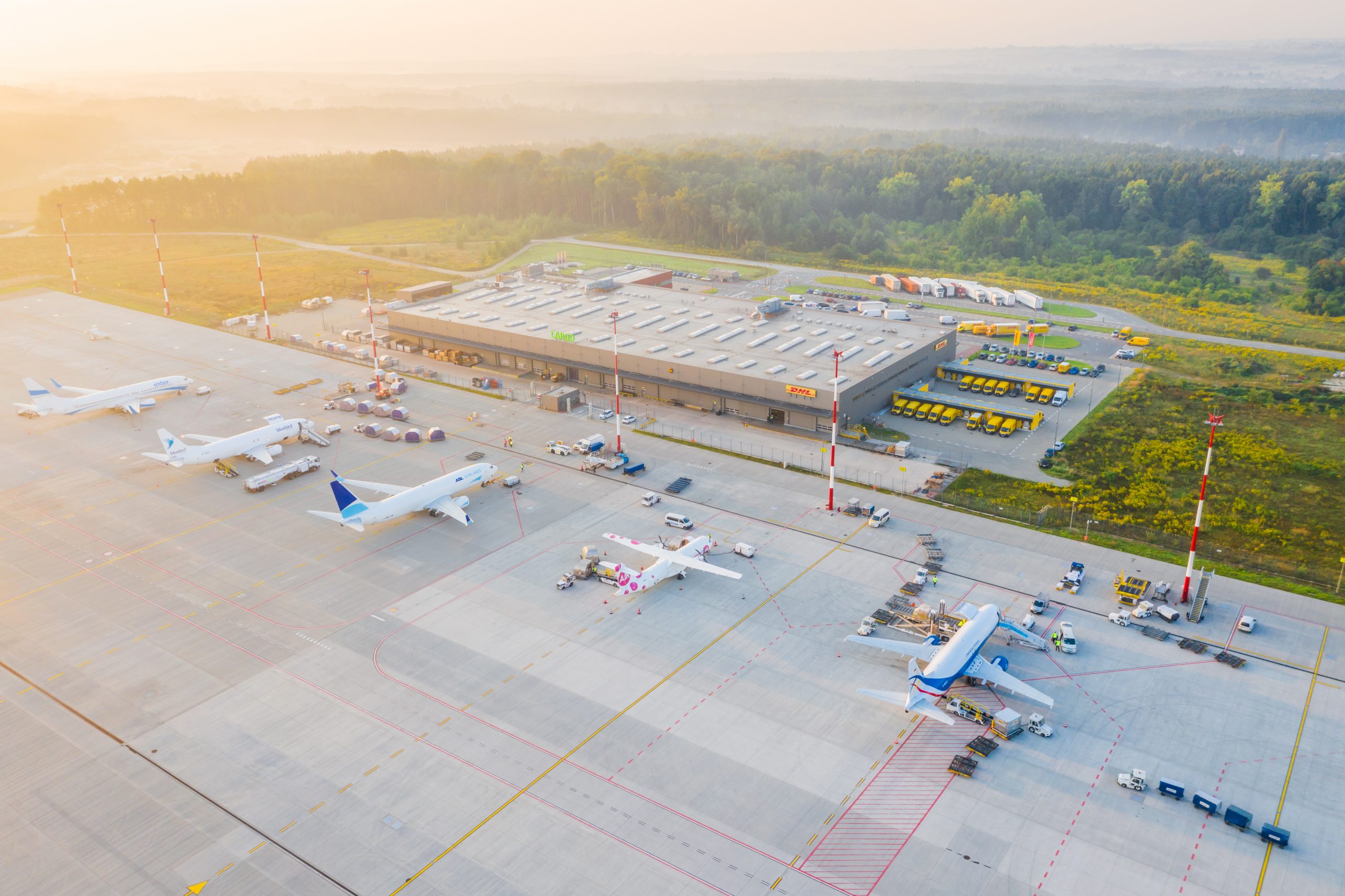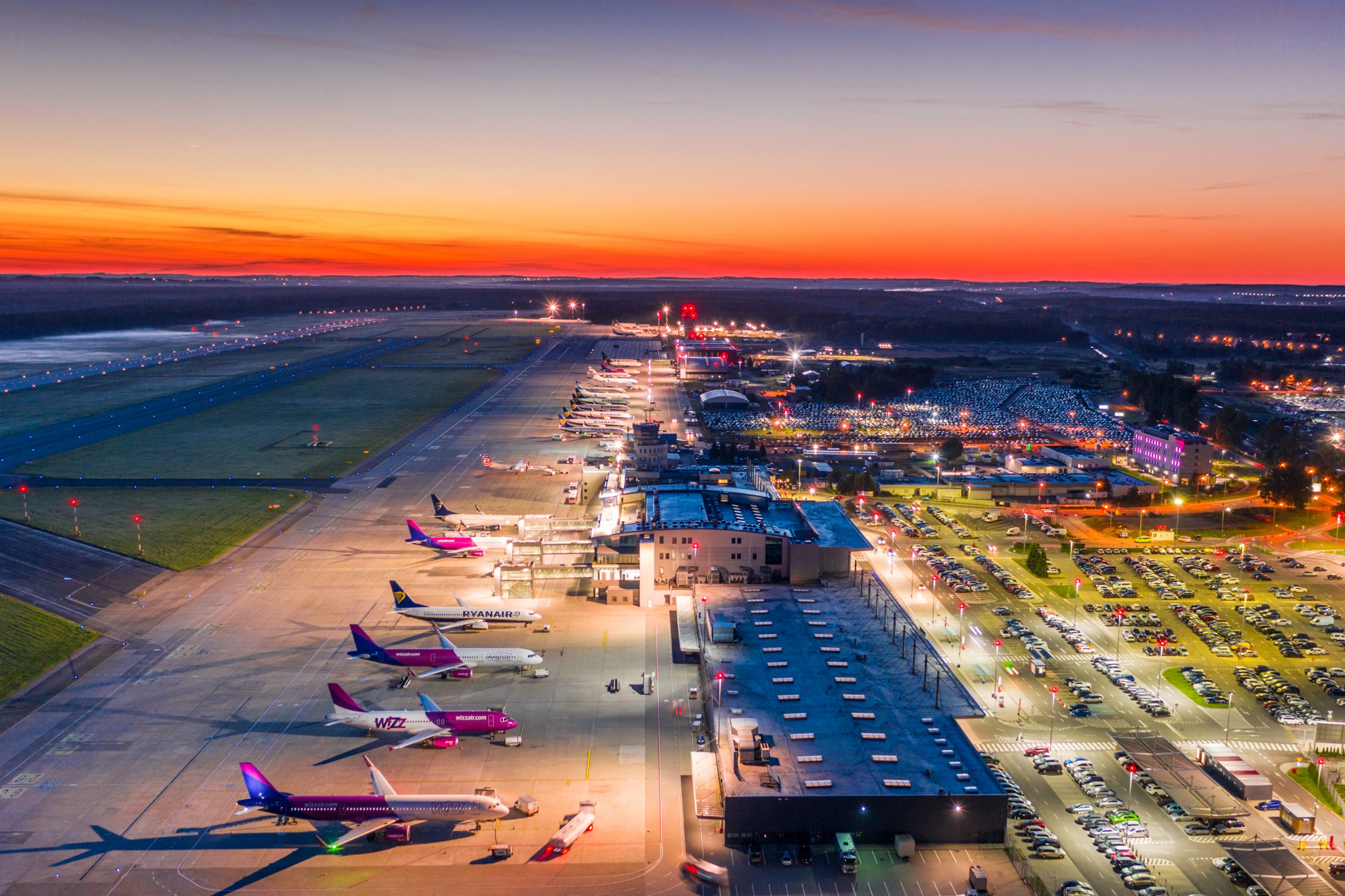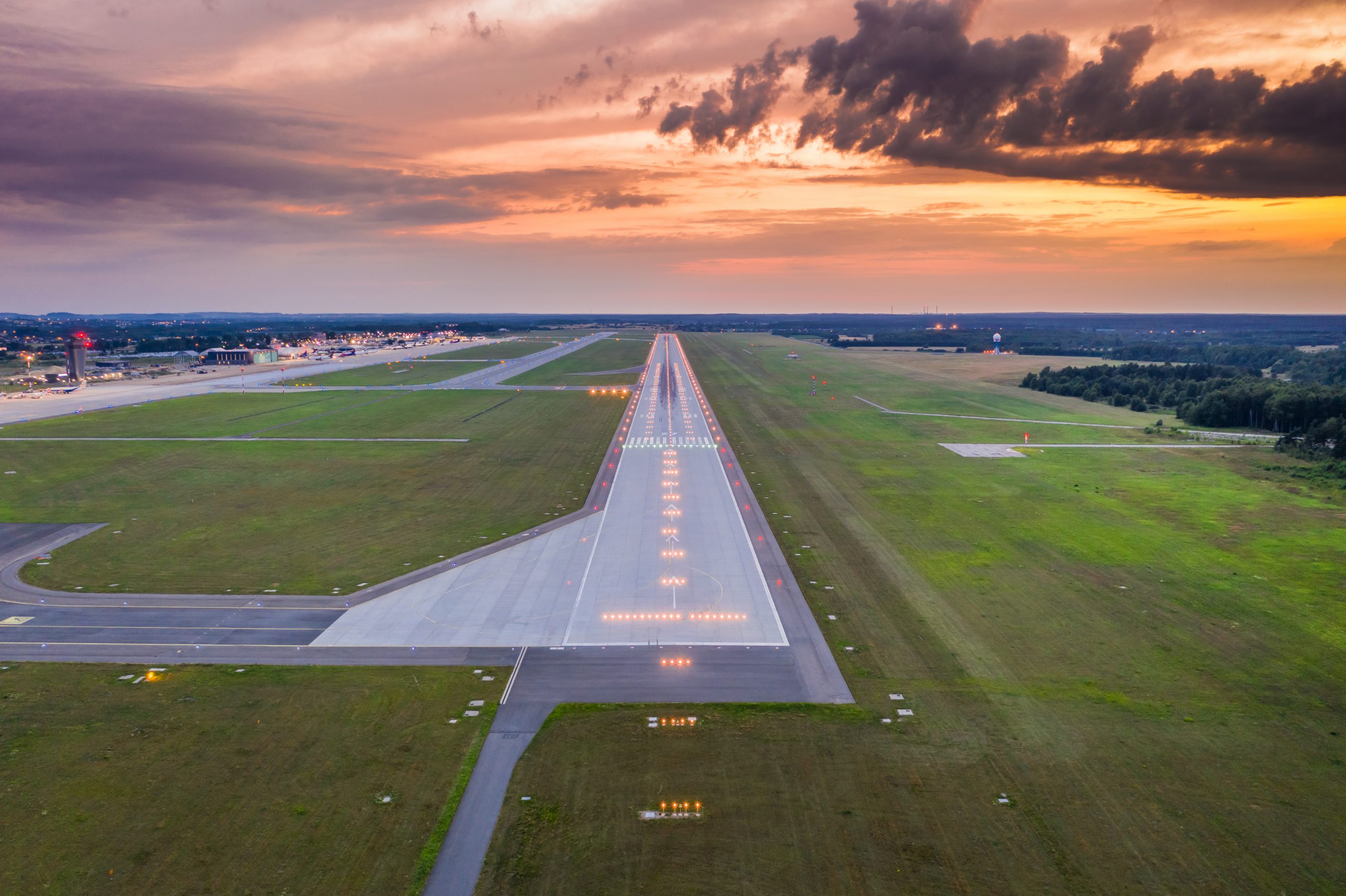Katowice Airport: A new terminal for passengers travelling to Schengen Area countries
- Like
- Digg
- Del
- Tumblr
- VKontakte
- Buffer
- Love This
- Odnoklassniki
- Meneame
- Blogger
- Amazon
- Yahoo Mail
- Gmail
- AOL
- Newsvine
- HackerNews
- Evernote
- MySpace
- Mail.ru
- Viadeo
- Line
- Comments
- Yummly
- SMS
- Viber
- Telegram
- Subscribe
- Skype
- Facebook Messenger
- Kakao
- LiveJournal
- Yammer
- Edgar
- Fintel
- Mix
- Instapaper
- Copy Link
Posted: 6 January 2022 | Artur Tomasik | No comments yet
Artur Tomasik, Chairman of the board of the Upper Silesian Aviation Group, speaks to International Airport Review about the newly reconstructed and expanded passenger Terminal B at Katowice Airport, which opened in August this year and which will improve the passenger experience for those passengers travelling to Schengen Area countries.


Credit: Katowice Airport (KTW)
Located in the Silesian Voivodeship, Katowice Wojciech Korfanty Airport (KTW) is one of the biggest regional airports in Poland. It handles the most industrialised and one of the most urbanised regions in the country.
Thanks to a convenient location, as well as modern and diverse infrastructure, passenger and cargo traffic are simultaneously handled at Katowice Airport. As a result, the airport is the country leader in charter traffic and the regional leader in cargo traffic.
The terminal infrastructure at Katowice Airport comprises three buildings dedicated to handling passenger traffic and one building dedicated to cargo traffic. Passenger Terminal A handles departure flights to non-Schengen countries; one may travel to Schengen Area countries from passenger Terminal B, and passenger Terminal C is responsible for all arrivals.
The makeup of passenger traffic
The network of available flights at Katowice Airport is shaped by traditional carriers (LOT Polish Airlines, Lufthansa), low-cost airlines (Wizz Air, Ryanair – both airlines have established bases at Katowice Airport) and air carriers who handle charter flights for travel agencies (e.g. Enter Air from Poland). During the peak of the summer 2021 schedule, the Katowice Airport network comprised 130 regular and charter routes. Charter flights are a very important part of passenger traffic at Katowice Airport. In the record-breaking 2019 – the last full year before the outbreak of the COVID-19 pandemic – 4.8 million travellers were handled at the airport; two million of them (41.4 per cent) travelled to/from Katowice Airport on charter flights. The significance of charter traffic at Katowice Airport is further underlined by the fact that a LOT Polish Airlines’ Boeing 787 Dreamliner is based at the airport. The national Polish carrier’s aircraft handles long-haul charter flights for travel agencies to such destinations as Cancún in Mexico and Puerto Plata and Punta Cana in the Dominican Republic.
The importance of cargo


Credit: Katowice Airport (KTW)
Cargo traffic is also an important part of the airport’s activities. In the eastern part of Katowice Airport there is a 12km2 cargo terminal. In spite of he COVID-19 pandemic, 2020 was record-breaking for cargo traffic; such a tendency derives from the fact that cargo traffic was not limited by the suspension of flights which was in force from March to June 2020. All in all, 20,375 tonnes of freight (the most in the airport’s history) were handled last year. In accordance with forecasts, 2021 will also be record-breaking, as over 50 per cent more freight is going to be handled in comparison with 2020, resulting in approx. 30,000 tonnes of cargo being transported to/from Katowice Airport.
Currently, the regular cargo network at Katowice Airport comprises 10 routes – they are handled for such companies as Amazon, Lufthansa Cargo, UPS, TNT, DHL Express and FedEx. Worth mentioning is the fact that Lufthansa Cargo handles RFS (Road Feeder Service) traffic at the airport. Katowice Airport aims to continue supporting the development of the cargo area; in the foreseeable future, the airport will considerably improve the cargo infrastructure. Furthermore, three big operators have declared that they wish to continue developing at the airport.
In spite of the COVID-19 pandemic, 2020 was record‑breaking for cargo traffic”
A new passenger terminal
Complex and harmonious handling of passengers would not be possible if it were not for an advanced terminal infrastructure which is capable of handling heavy traffic. Katowice Airport continuously monitors passengers’ needs and strives to provide the best possible experience during their stay at the airport. As part of the latest investment aimed at improving the quality of Katowice Airport, a reconstructed and expanded passenger Terminal B has been put into service. Basically new, the building was opened on 5 August 2021 and handles flights to Schengen Area countries. The overarching goal of the investment which began in September 2019 was to considerably improve passenger experience. Consequently, following the end of the project, the surface of the building increased by 40 per cent from 12.2km2 to 17.2km2, and its cubature by 35 per cent from 88.4km3 to 120.3km3. The façade of passenger Terminal B was moved 17.5m to the south – by doing so, it became possible to align and connect the building with Terminal C.


The throughput of the new terminal building increased from two million to four million passengers yearly; the total throughput of the terminal infrastructure at Katowice Airport increased from six million to eight million travellers. Credit: Katowice Airport (KTW)
The building’s physical appearance was also altered. Following the end of the reconstruction of Terminal B, it became architecturally consistent with Terminals A and C. The throughput of the new building increased from two million to four million passengers yearly; the total throughput of the terminal infrastructure at Katowice Airport increased from six million to eight million travellers. The surface of all passenger terminals increased from 29km2 to 34km2.
A new and expanded layout
Passenger experience is a factor which has a considerable, noticeable impact on the infrastructure at Katowice Airport. To provide the best possible experience during one’s stay at passenger terminals, big changes have additionally been introduced inside the expanded Terminal B. Among the most important conveniences is the relocation of the security control area to the first floor. In the past, it was located on the ground floor, right next to the check-in area. By moving the former area, it became possible to not only improve communication inside the building, but also expand both aforementioned areas which are now located on separate floors. As a result of putting Terminal B into service, the number of check-in counters increased from 18 to 28; one counter is for oversized baggage, and two are for passengers who wish to check in their baggage by themselves. Movement between both areas is possible thanks to a travellator which connects the ground floor with the first floor, and two elevators located in the terminal. Special emphasis must be put on the fact that the building is fully adapted to handling persons with disabilities.


Credit: Katowice Airport (KTW)
More retail offerings
Complex and harmonious handling of passengers would not be possible if it were not for an advanced terminal infrastructure which is capable of handling heavy traffic”
For passengers travelling from Katowice Airport, big changes were also introduced in the Departures Hall in Terminal B. Among probably the most important of them are three external towers which are connected with the terminal with bridges. Each tower has two boarding gates for passengers, as well as an elevator for persons with disabilities. Consequently, the number of gates in passenger Terminal B has increased from 10 to 16. Remaining boarding gates are located on the ground floor of the Departures Hall. They can be accessed via an elevator or a travellator. In addition, Terminal B offers a new fast track, new food, retail and services outlets, as well as a new business lounge, which is twice as big as the previous one.
Advanced baggage screening technology
Among conveniences in the new passenger Terminal B is one which passengers generally don’t see: the “heart” of the building, i.e. the baggage transport, security control and sorting system. Upon being put into service, it was the most advanced system of its kind in Poland. It is equipped with two new standard 3 security control CT scanners, thanks to which it is possible to receive a detailed, tri-dimensional image of scanned pieces of baggage. The new baggage room is equipped with a tray sorter (76 trays) with a tilting system and 12 baggage chutes. The throughput of the entire system is 1,885 pieces of luggage per hour.
Biography


Issue
Related topics
Air freight and cargo, Air traffic control/management (ATC/ATM), Airport construction and design, Airport development, Airside operations, Baggage handling, COVID-19, New technologies, Passenger experience and seamless travel, Passenger volumes, Retail, Terminal operations
Related airports
Related airlines
Enter Air, LOT Polish Airlines, Lufthansa, Ryanair, Wizz Air


















